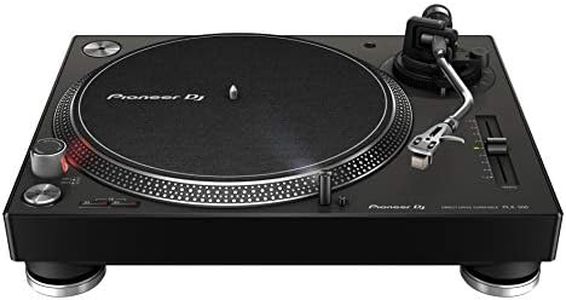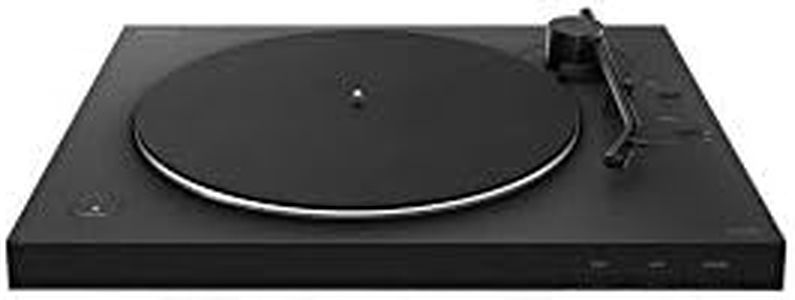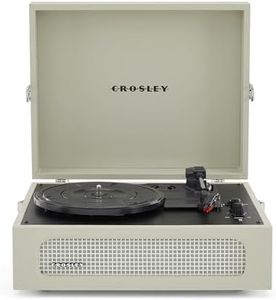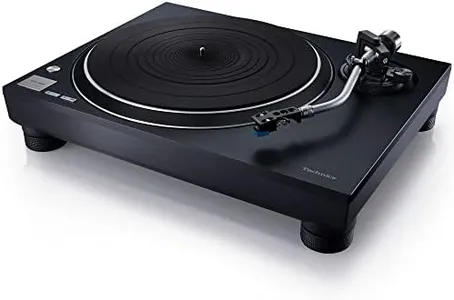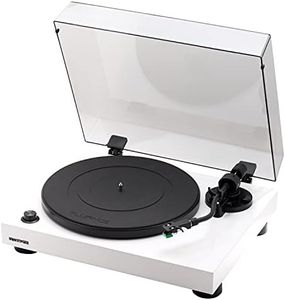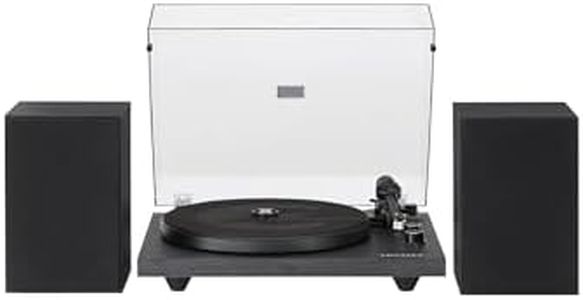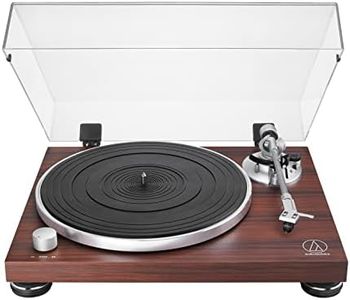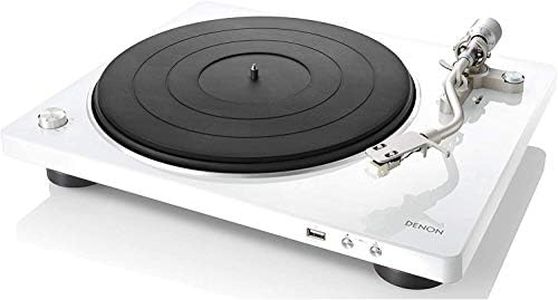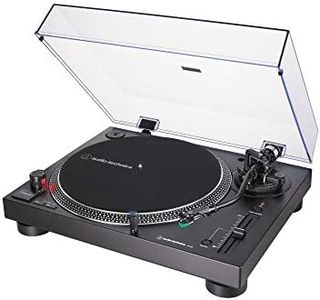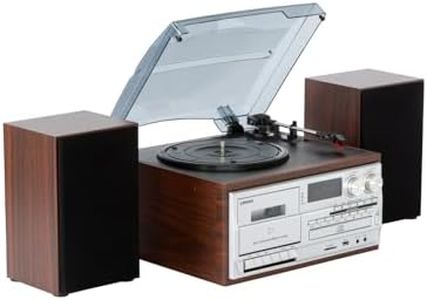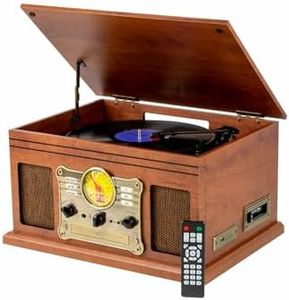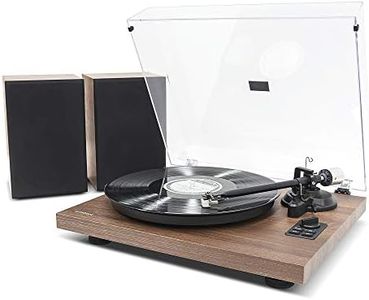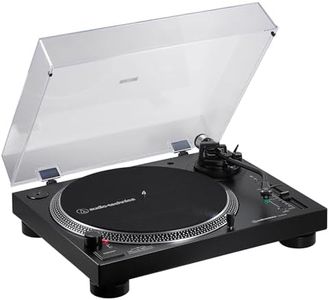We Use CookiesWe use cookies to enhance the security, performance,
functionality and for analytical and promotional activities. By continuing to browse this site you
are agreeing to our privacy policy
10 Best Vinyl Player
From leading brands and best sellers available on the web.#9
mbeat
11%OFF
MB-PT-28 Bluetooth Hi-Fi Vinyl Turntable Record Player with 36W Bookshelf Speakers, Supports 33/45 RPM Vinyl Record, Bluetooth Streaming via Smart Devices, Pre-installed Hi Fidelity MMC Stylus, Solid Metal Platter, Removable Dust Cover and Adjustable Counterweight and Anti-skating weight, Including Feature-Rich Audio Outputs, Line-in Pre-amplifier, USB Recording Function
Buying Guide for the Best Vinyl Player
Choosing the right vinyl player is not only about enjoying music but also about finding a turntable that fits your space, your needs, and how much you want to be involved in the playback process. When looking for a vinyl player, it’s important to think about where you will use it, your experience level with records, and whether you want extra features or simplicity. Understanding the main specifications will help you select a model that matches your lifestyle and helps you get the best sound and enjoyment from your record collection.Drive TypeDrive type refers to how the platter (where the record sits) is spun. The two main types are belt-drive and direct-drive. Belt-drive uses an elastic belt to spin the platter and often results in less vibration, which is better for sound quality. Direct-drive connects the motor directly to the platter, providing more consistent speeds and stronger torque, which some DJs and enthusiasts prefer. If you want simplicity and easy listening at home, belt-drive is usually quieter and gives great audio quality. If you plan to move the player often, or expect to DJ or frequently adjust tracks, direct-drive might suit you better.
Automatic vs. Manual OperationThis refers to how much of the process is handled by you versus the machine. Manual players require you to lift and place the tonearm, then return it when a record finishes. Semi-automatic can stop automatically at the end, while fully automatic models handle everything from start to finish. If you enjoy hands-on experiences and don’t mind a bit of care, manual can offer a classic, interactive feel. For those who want convenience or worry about wear and tear, automatic or semi-automatic models remove some effort and help protect your records.
Cartridge and Stylus TypeThe cartridge holds the stylus (needle), which reads the record's grooves. The quality and type of cartridge/stylus affect how your music sounds. Most basic models have fixed cartridges, while higher-end allow you to upgrade. Styli can be elliptical (more detailed) or conical (more durable, less detailed). If you just want to play records and don’t plan upgrades, built-in options are fine. If you’re chasing better sound or want to experiment, a model with upgradeable cartridge or stylus is best.
Built-in PreampA preamp boosts the record’s signal before it reaches speakers or amplifiers. Some players have a built-in preamp, making it easier to connect directly to powered speakers or home stereos. If your existing speaker system has a 'phono' input or amplifier, you may not need a built-in preamp. For users looking for an all-in-one setup or planning to connect to a variety of speakers, built-in preamps offer more flexibility, especially if you don't want to buy extra equipment.
Playback SpeedsMost vinyl players support two speeds—33 1/3 RPM and 45 RPM—to play standard LPs and singles. Some also support 78 RPM for vintage records. It’s important because the wrong speed can make music sound too slow or fast. If you mostly listen to modern LPs and singles, two speeds are sufficient. If you have an older record collection, look for a model that also supports 78 RPM.
Platter Material and Build QualityThe platter is where the record sits during playback. Heavier materials like metal help minimize vibrations and offer smoother sound, while plastic is lighter and more cost-effective. Build quality matters for avoiding skipping or vibrations. If you want the best sound and durability, look for solid, heavier platters. For casual listening or space-saving designs, lightweight options are usually fine.
Connectivity OptionsThis covers how the turntable connects to other equipment. Classic outputs use RCA cables, while some newer models include USB outputs for digitizing vinyl, or Bluetooth for wireless speakers. Think about where you'll play your music—if you want to listen on newer devices, USB or Bluetooth can be helpful. For dedicated sound systems, traditional outputs will work well.
Anti-Skate and Tracking ForceThese features help the stylus stay in the groove and prevent uneven wear on your records. Adjustable models allow you to fine-tune the pressure and keep playback smooth. For beginners or users who want hassle-free listening, preset or simple systems are easier to manage. Enthusiasts who want to protect valuable records or tweak performance should look for adjustable options.
